What Is A Fruit?
When we think about fruits, the first thing that comes to our mind is a delicious treat.
Fruits are delicious, juicy, and packed with nutrients such as vitamins, minerals and fibers that we all need for a healthy, balanced diet. Fruits that are eaten fresh have a delicious taste.
A fruit in botanical term, is a seed-bearing structure. In culinary term, it is a product of plants or trees that contain seed, and typically sweet or sour.
Pericarp, the outer layer of the fruit, is usually edible. Fruit is produced from the fertilizing and maturing of one or more flowers.
Fruits that we eat are divided into groups. In this article, we will learn more about the types of fruits and their health benefits.
Types Of Fruits
1. Simple Fruits
Fruits that we typically love to eat are Simple fruits. They are the product of the ripening-to-fruit of a simple or compound ovary in a single flower with a single pistil.
These types of fruits are classified as dry or fleshy fruits.
Dry fruits can be dehiscent or indehiscent. Dehiscence means that fruits may split open and discharge their seeds to the winds to scatter their seeds, while Indehiscence means that the distribution method may rely upon the decay and deterioration of the fruit to expose the seeds, or it may rely upon the eating of fruit and excreting of seeds by frugivores.
Fleshy fruits are also indehiscent and they may also rely on frugivores for distribution of their seeds, but they do not split open.
Types Of Simple Fruits
Drupes
Also known as Stone Fruit. Drupe fruits belong to the indehiscent type. The main characteristic of a drupe fruit is the very hard seed of the fleshy fruit.
Drupe fruits or Stone fruits are typically juicy, sweet fruits and pack with rich sources of vitamins and minerals, and fibers.
Examples of Stone fruits and their health benefits are listed below.

- Plum. Plums have a lot of varieties, but the red and the deep purple plums are the most popular because they have a juicy and sweet flesh inside. Nutritional contents of plums are 87% water, 11% carbohydrates, 1% protein, and less than 1% fat. Consuming a 100-gram serving raw plums supply 46 kilocalories of food energy. Eating prunes, the dried form of plums, also help control weight by using them as a healthy snack, and can also treat constipation.
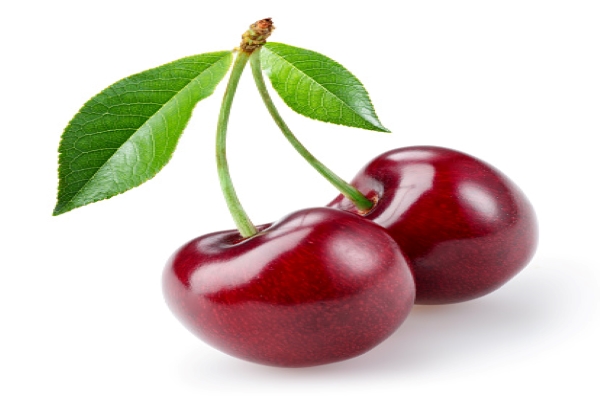
- Cherry. There are two types of cherries, the sour cherries and the sweet cherries. Sour cherries and sweet cherries are packed with a specific antioxidant, called polyphenols. These fruits also contain a good source of vitamin C. Consuming cherries or drinking cherry juice can help in reducing inflammation, resolving joint pain, and fights infection.

- Mango. Ripe mangoes are considered as one of the sweetest fruits. Mangoes make a good sugar replacement in shakes or smoothies. These fruits could help several digestive problems by preventing constipation or diarrhea because of its water content and dietary fiber. Consuming the yellow colored flesh contains 84% water, 15% carbohydrates, 1% protein, and has negligible fat. 100 g serving of this sweet fruit contains 60 calories. The fresh fruit is also rich in vitamin A, vitamin C, Folate, and antioxidants. Unripe mango or green mango is also packed in vitamins, such as vitamin C, vitamin A, vitamin B6, and vitamin K.
Berry
The most common types of a fleshy fruit are Berries. They contain multiple seeds, and the whole outer layer of the ovary wall ripens into a potentially edible pericarp.
Berries are typically small juicy edible type of fruits. They have a sour, sweet, or tart taste.
Did you know that strawberries and blackberries are not a classification of berries? But, in the culinary terms, they are considered berries. Strawberries, blueberries, goji berries, elderberries, and some varieties of raspberries are some of the examples of sweet berries. While sour berries include cranberries, gooseberries, and some types of raspberry.
Check out the health benefits of some of the most popular berries.

- Grapes. These fruits can be eaten fresh as table grapes. They are also used for making jam, grape juice, wine etc. Grapes can be green, black, dark blue, orange, or pink in color. Eating raw grapes give you 81% water, 18% carbohydrates, 1% protein, and have negligible fat. 100 grams of raw grapes provides 69 kilocalories of food energy, and moderate amount of vitamin K.
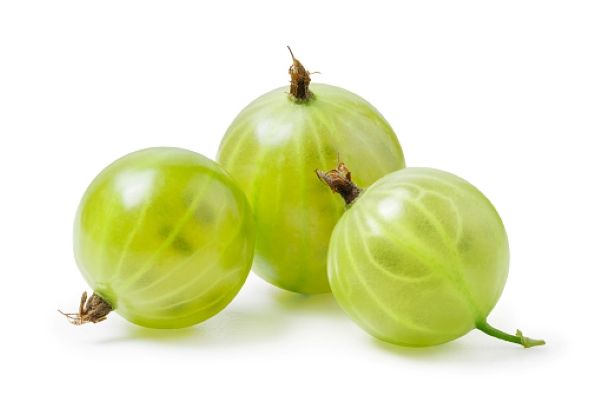
- Gooseberry. Gooseberries are nutritious, small fruits. These fruits are typically used in desserts and sauces. These fruits are rich in soluble and insoluble fiber, high in vitamin A, and supplies half of the recommended daily amount of vitamin C.

- Cranberry. These fruits are related to blueberries and bilberries. About 95% of cranberries are made and used to make cranberry juice and sauce. Cranberries are also sold dried and sweetened. Consuming cranberries will give you 87% water, 12% carbohydrates, and contain negligible protein and fat. 100 grams of raw cranberries supply 46 calories and moderate content of vitamin C, dietary fiber, and the mineral manganese. These berries can be frozen at home, and will keep up to nine months.
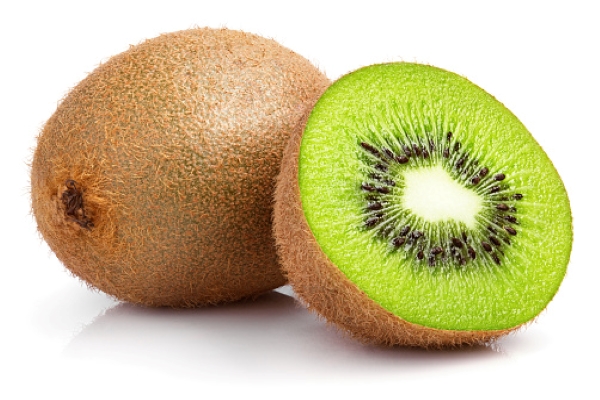
- Kiwifruit. Also known as Chinese gooseberry. This juicy fruit is native to central and eastern China. Kiwifruits are sweet and have a unique flavor. They are about 5 to 8 centimeters in length and 4.5 to 5.5 cm in diameter. These fruits have a fuzzy, fibrous tart, and have a soft texture. Kiwifruits contains 83% water and 15% carbohydrates, with negligible protein and fat. These fruits are also rich in vitamin C, vitamin K, and have moderate amount of vitamin E. 100 grams of green kiwifruits supply 61 kilocalories of food energy.

- Passion fruit. Passion fruit is 4 to 8 inches in diameter and has a round or oval shape. There are a lot of varieties of passion fruits which are rich in polyphenol, and they are grown in different parts of the world. These fruits are grown in semitropical and tropical regions. Passion fruits are sweet and they are often compared to tomatoes in texture. Eating raw passion fruit can give you 73% water, 22% carbohydrates, 0.7% fat and 2% protein. These fruits are also rich in minerals such as magnesium, potassium and phosphorus. They have also high vitamin C and vitamin A.

- Strawberry. Technically, Strawberry is not a “true berry” because the seeds are grown on the outside and do not come from a single ovary. Strawberries are one of the most popular fruit berries because of their sweet taste and bright red color. They can be prepared as juice, pies, jam, ice creams, or milkshakes. Nutritional value of eating raw strawberries is 91% water, 8% carbohydrates, 1% protein, and contain negligible fat. 100 gram reference amount of strawberries provides 33 kilocalories. Strawberries are also rich in vitamin C and a good source of manganese. Consuming has been linked to lower heart disease risk, reduce inflammation, prevents cancer, and protection against obesity-related disorders.

- Blueberry. These tasty blueberries are packed with antioxidants, such as polyphenols and various phytochemicals. They are beneficial to chronic diseases such as diabetes, heart disorders, and cancer. Nutritional contents of blueberries are 84% water, 14% carbohydrates, 0.7% protein, and 0.3% fat. They are also a good source of vitamin C. 100 grams serving of blueberries provide a relatively low caloric value of 57 kcal with a glycemic load of 6.
Pome Fruits
Pome fruits are a type of fruits produced by flowering plants. They have a hard flesh that surrounds a core containing seeds. One of the most notable features of pome fruits is their central core. They can have a stony or leathery texture. Apples and pears are the most common types of pome fruits.
Examples of pome fruits and their health benefits are listed below.

- Apple Fruit. If you want to lose weight, then you might consider eating apples. Eating raw apple gives you 86% water and 14% carbohydrates, with negligible content of fat and protein. Also consuming a medium sized fruit provides about 15% of your daily vitamin C requirements, and 17% of your dietary fiber needs. One fruit has around 100 calories. Eating apples has been linked to a lower cardiovascular disease, diabetes, risk of cancer, and other health conditions. Consuming one apple a day is actually a healthy diet.

- Pear. Pears are a type of sweet tasting fruit that are typically consumed canned, fresh, dried and as juice. Pears come in various colors and shapes. These are fruits are also crunchy. Eating raw pears gives you 84% water, 15% carbohydrates and contains negligible protein and fat. 100 grams of raw pear supplies 57 kilocalories of food energy. They also have a good source of vitamin C and vitamin K.
Citrus Fruits
Citrus fruits, also known as hesperidia, are types of fruits that have a thick tangy rind, and come in different colors from green to yellow to orange.
Citrus fruit is a type of berry in botanical terms.
Most citrus fruits have a soft juicy flesh that come in segments. These segments are filled with tiny liquid-filled carpels that have citrus juice.
Below are some of the examples of citrus fruits and their health benefits.

- Orange Fruit. These orange fruits are a hybrid between pomelo and mandarin. They have a greenish to orange leathery, outer skin and are round in shape. When these citrus fruits are peeled, the fruit appears to be a small-bean shaped segments that have a juicy, sweet pulp. These fruits can also be prepared as orange juice or jam. Consuming these citrus fruits gives you 87% water, 12% carbohydrates, 1% protein, and contains negligible fat. 100 grams of orange flesh provides 47 calories, and is rich in vitamin C. Furthermore, these fruits are a good source of vitamin B9 and potassium.
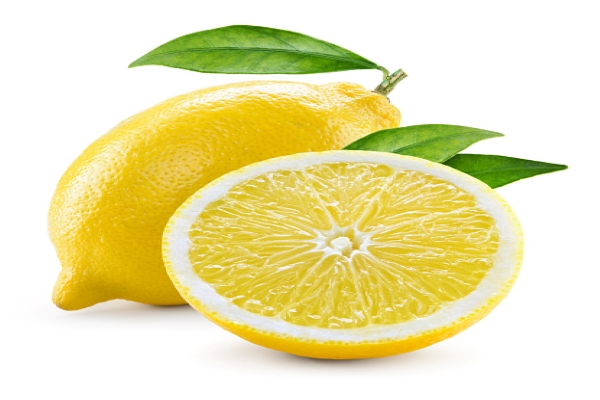
- Lemon. Because of its health benefits, Lemon fruits are the most common type of citrus fruit. They have a yellow outer skin. These common fruits have a sour taste and are used in making lemon drinks, desserts and other recipes. These juicy fruits are rich in vitamin C and antioxidants. They also contain phytochemicals, such as polyphenols, which help reduce inflammation.

- Lime. Limes are green citrus fruits. They are usually round, have green outer skin, and about 3-6 centimeters in diameter. They have higher contents of acids and sugars than lemons do. These sour fruits are often used in cocktails, often based on gin. Raw limes contain 88% water, 10% carbohydrates and less than 1% each of fat and protein. 100 g serving of lime contains 35% of vitamin C.
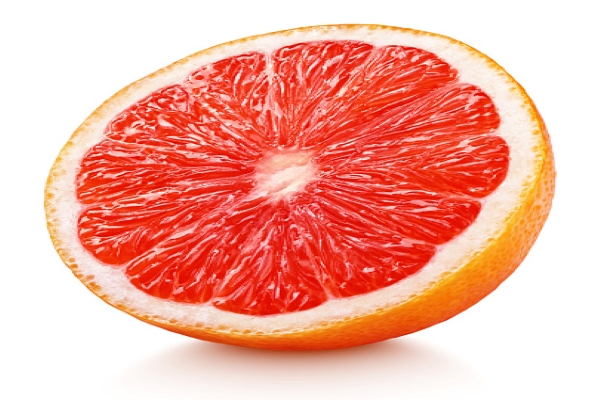
- Grapefruit. These fruits are citrus hybrid between pomelo and sweet orange. Grapefruits come in various colors. Common fruit varieties are pink and yellow pulp colors. These fruits are very nutritious because it contains over 100% of the recommended daily amount of vitamin C, a good source of vitamin A, and rich in Flavanoids, a type of antioxidant. Consuming raw grapefruit gives you 90% water, 8% carbohydrates, 1% protein, and negligible fat. 100 grams of raw grapefruit has 33 kilocalories.
Pepos
These are huge fleshy fruits that have multiple seeds throughout the flesh, or grouped together in the center.
In botanical terms, they are classified as berries. The difference between citrus fruits and pepo fruits is that the flesh of pepo fruits are not segmented.
Cucumbers, pumpkins, eggplants, and squash are a certain kinds of pepo fruits. While the sweetest varieties of pepos are melons and watermelons.
Examples of pepo fruits and their health benefits are listed below.

- Watermelon. Watermelons are juicy fruits that are grown in tropical or temperate regions. These fruits need temperatures higher than about 25 °C to thrive. These types of fruits have high water content, which help you stay hydrated. These fruits contains 91% water, contains 6% sugars, and is low in fat. A 100-gram serving of watermelon fruit has 30 kilocalories of food energy, and 8.1 mg of vitamin C. The pulps are rich in carotenoids, such as lycopene. If you want to lose weight, then you should add this fruit flesh to your snack list.

- Cantaloupe Melon. Cantaloupes are usually eaten as fresh fruits, as desserts with ice cream or as salads. Raw cantaloupes are 90% water, 8% carbohydrates, 0.8% protein and 0.2% fat. When eaten raw, it supplies 44% vitamin C and 21% vitamin A. These juicy fruits are often served cold and will keep you hydrated because of their high water content. These fruits contain an antioxidants such as choline, zeaxanthin and beta-carotene.
2. Aggregate Fruits
Also called etaerio. These types of fruits are developed from multiple ovaries of a single flower. The fruits are made up of berries or drupelet. Raspberries and blackberries are classified as tiny drupe fruits or drupelets because of their small size. These fruits are categorized as achenes, berries, drupelets, and follicles.
Achenes are most commonly seen in aggregate fruits. Examples of achenes are strawberries, buckwheat, and sunflower seeds.
Examples of these types of fruits are listed below.

- Custard Apple. Custard apples have a pleasant and sweet flavor. They vary in size , ranges from 7 to 12 cm depending on the cultivar. They can be heart-shaped, spherical, oblong, or irregular. When these fruits are already ripe, they turn brown or yellowish, with with red highlights and a varying degree of reticulation, depending on the variety. Custard apples are rich in vitamins and minerals. These nutritious fruits are an important ingredient of a healthy diet because they contain less fat, less sodium, and free from cholesterol.

- Raspberry. Technically, raspberries are also considered a drupe fruit. However raspberries are included in the list of berries in culinary terms. Black raspberries are packed with antioxidants which is good for your heart health. Consuming fresh raspberries contains 86% water, 12% carbohydrates, and have about 1% each of protein and fat. 100 gram amount, raspberries provide 26.2 mg vitamin C, 53 calories and 6.5 grams of dietary fiber.

- Blackberry. These fruits are very tasty, and can be added to desserts. Blackberries are tiny dark druplets that can also be eaten alone. They contain vitamins such as vitamin E, vitamin K, and vitamin C, and are a great source of manganese and magnesium.
3. Multiple Fruits
These types of fruits are made from a cluster of flowers, also called inflorescence. Each flower combines together and matures into one mass of fruit. These fruits are also called collective fruits.
Check out the examples of Multiple fruits below.

- Pineapple. Pineapples are widely used in cuisines around the world. Originally from South America, pineapples are now grown in many tropical countries. The outside layer of pineapples is thick and spiky. The flesh is yellow in color and has a sweet taste. Pineapples are rich in vitamin C, high in manganese, and an excellent source of vitamin B6 and vitamin B1. Eating the fruit pulp gives you 86% water, 13% carbohydrates, 0.5% protein, and contains negligible fat. 100 grams of raw pineapple has 50 kilocalories of food energy.

- Fig. Figs are the edible fruits of a species of small tree, Ficus carica. They are native to western Asia and Mediterranean. These fruits can be eaten fresh or dried. Figs have a chewy texture and sweet flavor. They go well with salads, soft cheeses, and pies. Raw figs contain 79% water, 19% carbohydrates, 1% protein, and contain negligible fat. They are also packed with minerals such as iron, magnesium, and calcium, and have a good source of vitamin A, vitamin K and soluble fiber.

- Mulberry. Mulberries are about 2-3 cm long. Ripe mulberry fruits turns from pink to red, while immature fruits are pale yellow, green, or white. Dark purple or black mulberries have a sweet flavor when full ripe. They are used in wines, tarts, pies, and herbal teas.
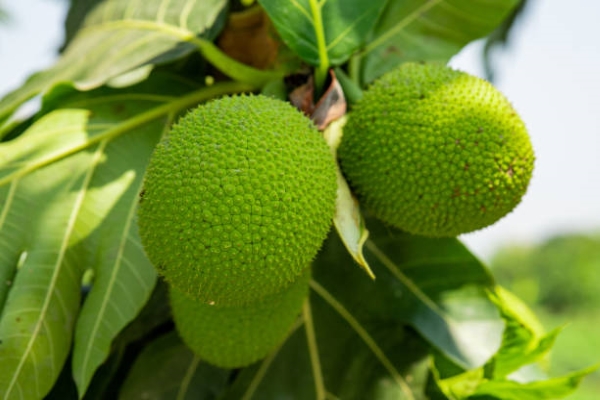
- Breadfruit. There are a lot of varieties of breadfruits. Breadfruits are closely related to breadnut. These types of fruits can be eaten once cooked. The flavor of a moderately ripe breadfruit when cooked is similar to a potato or freshly baked bread. Breadfruits have 71% water, 27% carbohydrates, 1% protein and negligible in fat. 100 grams of raw breadfruit have 35% vitamin C, and 10% thiamin and potassium.
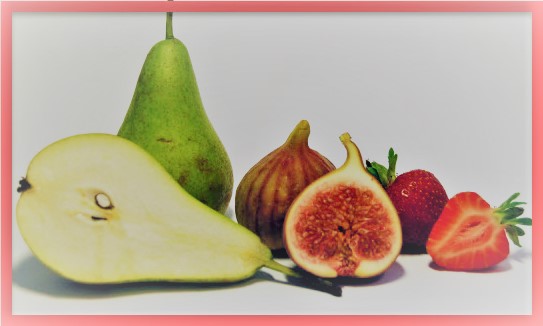
4. Accessory Fruits
Also known as false fruit, pseudocarp, pseudofruit, or spurious fruit. These are fruits which some of the fruit flesh are derived from some adjacent tissue and not from the floral ovary.
Examples of accessory fruits are strawberries, Figs, Apples, Stone fruits etc.
Tropical Fruits
Tropical fruits are fruits that come from a tree native to the tropical region. A lot of tropical fruits are sweet, juicy, tender and flavorful.
Tropical fruits are not classified as a type of fruits. However some people believe that the tropical fruit category contains exotic fruits, and certain fruits are in demand all over the world such as papaya, dragon fruit, rambutan, lychees, avocadoes, bananas, pineapples, guavas and passion fruit.
Conclusion
With that said, there are a lot of types of fruits in the world and you have many ways to enjoy them. You can add them to your smoothies or make fruit juices. Various edible fruits provide good source of water and fiber, most of the fruits are rich in vitamin C. Though fruits are considered nutritious foods, you should also be cautious and watch out for fruit allergies. Some people may be allergic to a certain kind of fruit. If consuming a specific type of fruit causes a negative physical reaction, it is best to contact your doctor right away. Thank you for reading this post.

